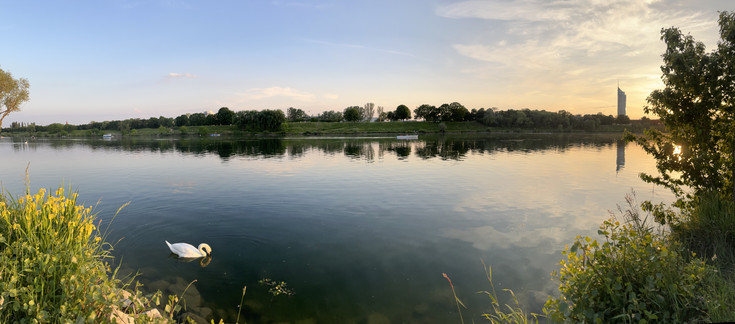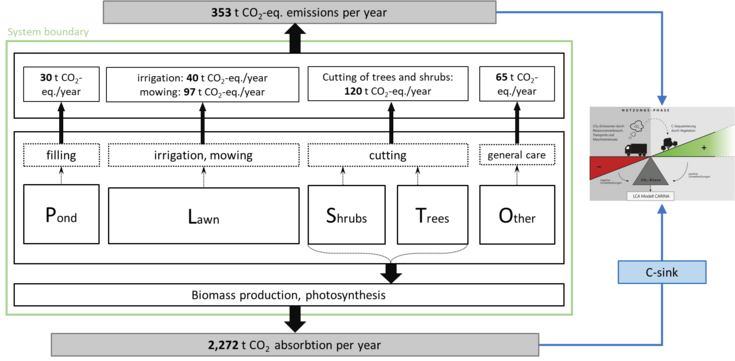Neue Publikation – Von der Thannen et al. 2025
Carbon source or sink? Assessment of the most important green infrastructure of the City of Vienna in Austria – the Danube Island
Von der Thannen, M., Smit, E., Klisch, A., & Rauch, H.P. (2025).

Abstract
The increasing effects of climate change on urban areas are driving interest in green and blue infrastructure (GBI) as climate mitigation measures. Vegetation as part of GBI plays a key role in urban heat island reduction strategies through multiple ecological and physical processes. However, carbon sequestration capabilities of vegetation as part of GBI are poorly studied. The understanding of the carbon balance of GBI is crucial to holistically assess their potential in sustainably enhancing urban climatic conditions and mitigating climate change effects. In Vienna, the artificial Danube Island is the most important GBI and recreational area in the city. This study aims to provide a holistic carbon balance of its use phase and examines the climate potential of the Island’s vegetation. To achieve this, field and remote sensing data were integrated to calculate the biomass and carbon stock. The total biomass was found to be approximately 40,840 t. Assuming the carbon content is half of the vegetation biomass dry weight, the Danube Island stores 20,420 t of carbon, equivalent to about 74,940 t of CO2. On the other side of the carbon balance, the study analysed the annual environmental burden of maintenance activities. Using the LCA method and considering the Global Warming Potential (GWP) impact category, the environmental burden was calculated with the Ecoinvent and Swiss non-road databases. Results indicate that maintaining the green infrastructure on Danube Island generates 353 t of CO2-equivalent emissions annually. On the other hand, the Danube Island has the potential to absorb 2,272 t of CO2 per year through its trees and shrubs. On balance, this places the Danube Island squarely on the side of being a carbon sink. This study innovatively combines biomass quantification with LCA to provide a comprehensive carbon balance of urban green infrastructure. The findings underscore the importance of considering both carbon sequestration and maintenance-related emissions in urban climate adaptation strategies.
https://link.springer.com/article/10.1007/s40974-025-00367-7

LCA system diagram showing LCA results of the use phase on Danube Island
